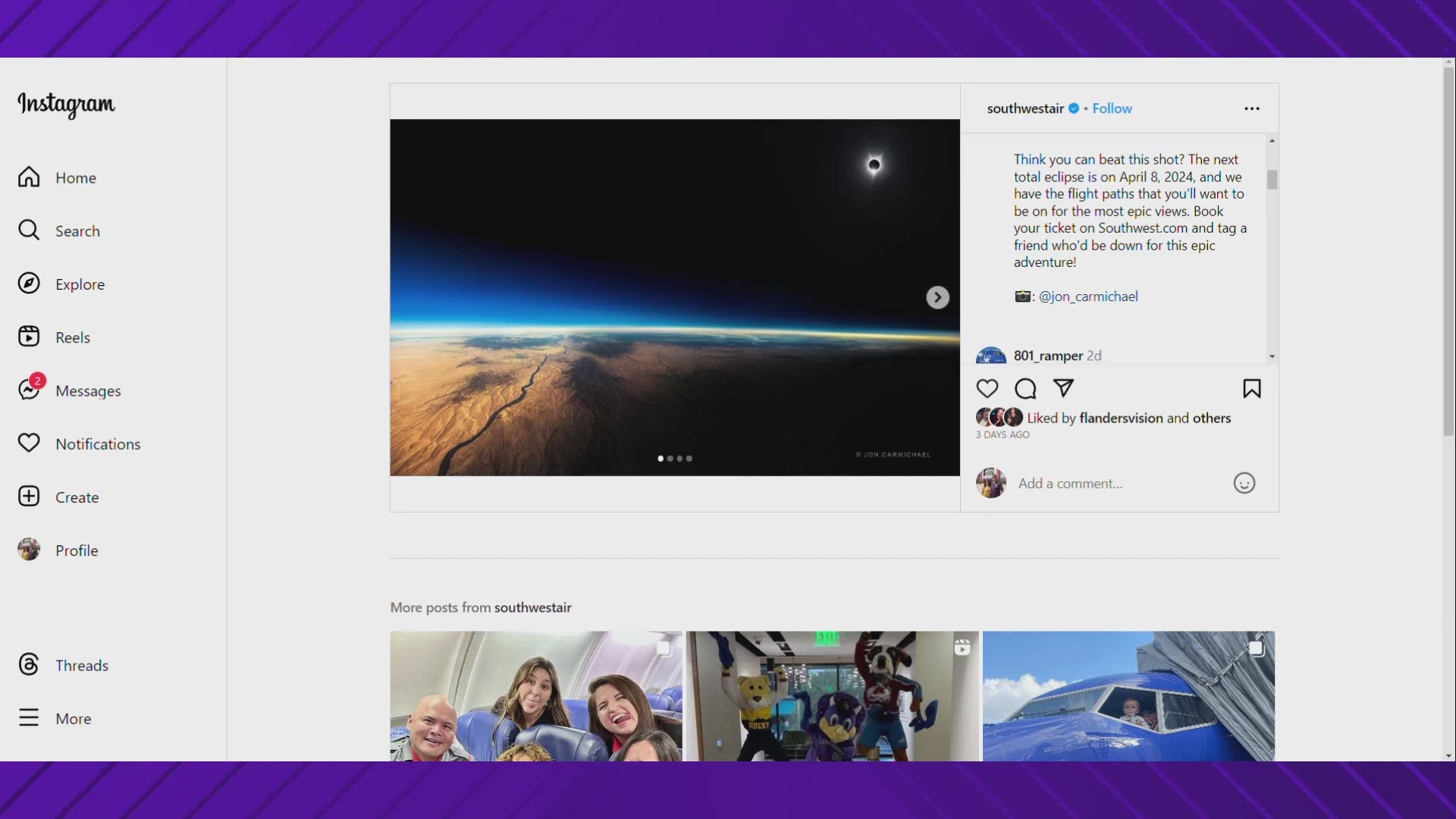WASHINGTON — The new year is around the corner and with it comes several skywatching events.
Stargazers will have an array of opportunities to see celestial marvels such as meteor showers, supermoons and even a total solar eclipse in 2024. That's all on top of plenty of full moons in the calendar year.
If you're planning to gaze at the night sky in the upcoming year, be sure to jot down these dates for some of the biggest celestial events.
Here are the top skywatching events in 2024:
January
Quadrantids meteor shower
A meteor shower kicks off 2024 just days after millions have rung in the new year.
The Quadrantids meteor shower, considered among the top annual meteor showers, peaks between Jan. 3 and Jan. 4.
During peak activity and under favorable conditions, these showers can produce about 120 shooting stars per hour. While most meteor showers tend to have a two-day peak, NASA says the Quadrantids have a much smaller peak window -- often lasting just a few hours.
March
Penumbral Lunar Eclipse
A subtle, but captivating lunar eclipse is slated for Mar. 25, 2024.
The partial eclipse occurs when the moon passes through Earth's outer, or its penumbral, shadow. NASA says this particular eclipse is one of the most subtle ones out there and often times people don't notice an eclipse is underway.
April
Total Solar Eclipse
The year's biggest skywatching event unfolds on April 8.
A total solar eclipse will encapsulate North America, passing over the U.S., Mexico and Canada. This will be the last total solar eclipse seen from the U.S. until 2044, so you won't want to miss out.
The Northern Hemisphere got a sneak peek at what to expect during the annular solar eclipse, often known for its "ring of fire", a few months ago.
During a total solar eclipse, the moon passes between the sun and the Earth and completely blocks the sun. Skies will darken, temperatures will cool and some nocturnal wildlife may appear.
Lyrid meteor shower
Some of the fastest meteors can be seen around Earth Day each year.
The Lyrids, which are expected to peak between April 21 and April 22 next year, are known for their speedy and bright fireballs. Under ideal conditions, the up to 15 Lyrids can be seen per hour.
Having been observed for more than 2,700 years, it is among the oldest known meteor showers.
The Lyrids are known to have outbursts, which that increase rates to as many as 100 meteors per hour, every 60 years, according to NASA. The next outburst is expected in 2042.
August
Perseid meteor shower
The Perseid meteor shower is often one of the most anticipated celestial marvels each year.
Despite losing the starring role to a total solar eclipse in 2024, the Perseids are still a must-watch for any stargazer. The showers are expected to peak on the mornings of Aug. 11, Aug. 12 and Aug. 13, according to EarthSky.
This year, the moon will be near its first quarter phase and will be approximately 50% illuminated during the Perseid's peak. With that in mind, the optimal window to see these bright streaks will be right after midnight, when the moon sets, until dawn.
During peak activity, these showers can bring about 50 to 100 meteors per hour.
September
Partial lunar eclipse
Another lunar eclipse occurs later in 2024 on Sept. 17.
Unlike the eclipse in March, this will celestial event is much more pronounced in the night sky. The moon will pass through the Earth's umbra and a shadow will appear to take over the moon.
Because it is just a partial lunar eclipse, the shadow will grow and then recede without ever entirely covering the moon, NASA says.
November
Leonid meteor shower
The Leonids, a major meteor shower with colorful and bright streaks, peak during mid-November.
Peak activity is predicted between Nov. 17 and Nov. 18, according to EarthSky. During this time, stargazers can see up to 15 meteors per hour.
Despite the low count, the Leonids are historically known to produce some powerful storms every 33 years or so, NASAs says. During a storm in 1966, thousands of meteors per minute appeared to fall like rain in the night sky.
The last Leonid storm was in 2002, according to the space agency.
In 2024, these showers might be harder to see as there's a full moon just days before the Leonids' peak. Still, stargazers can still look up after midnight and before dawn to see some bright streaks.
December
Geminid meteor shower
The Geminids meteor showers are one of the year's best and brightest celestial displays.
The annual meteor shower peaks during mid-December and is set to peak between Dec. 13 and Dec. 14 next year.
During peak activity and with clear skies, up to 120 meteors per hour are visible. According to NASA, you may even see a meteor every minute.
Most meteors tend to appear colorless or white, but the Geminids often show a greenish hue, according to NASA. It's considered "one of the best and most reliable annual meteor showers," according to the space agency.

